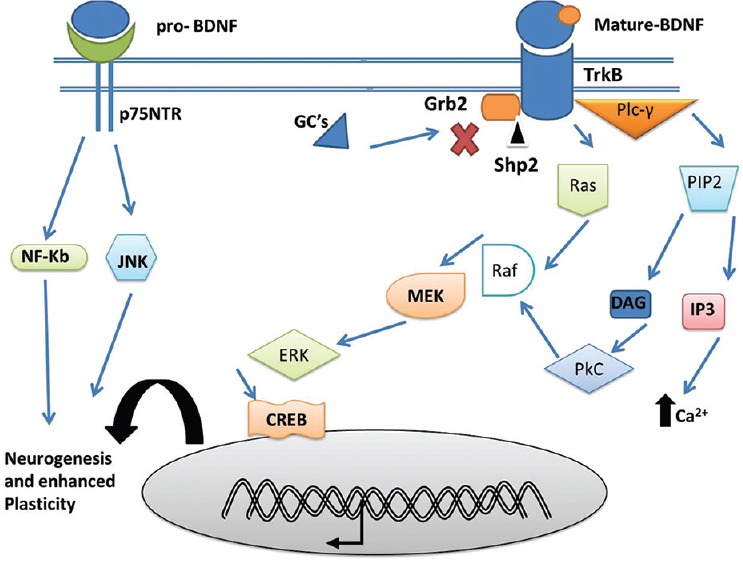Figure 3.

Schematic representation of the modulation of downstream signaling pathways of the brain derived neurotrophic factors (BDNF) by glucocorticoids (GCs). BDNF bind to their cognate tyrosine kinases receptor to initiate downstream signaling events which is inhibited by GCs. BDNF through Phospholipase C-γ/protein kinase C pathway through a cascade involving phosphatidylinositol 4,5-bisphosphate, inositol triphosphate, leads to release of intracellular calcium (Ca2+) and regulates synaptic plasticity. BDNF activated Ras/extracellular signal-regulated kinase (ERK)/mitogen-activated protein kinase/ERK kinases)/cyclic AMP response element-binding protein signaling is involved in cell proliferation, differentiation and protection of neurons. BDNF signaling causes deactivation of C-jun N-terminal kinase, thereby inhibiting destabilization of microtubules and maintaining neuronal dynamic stability. DAG=Diacylglycerol, Nf-Kb=Nuclear factor kappalight- chain-enhancer of activated B cells, Src homology region two domain-containing phosphatase-2, p75 neurotrophin receptor, Grb- 2=Growth factor receptor-bound protein 2[68]
